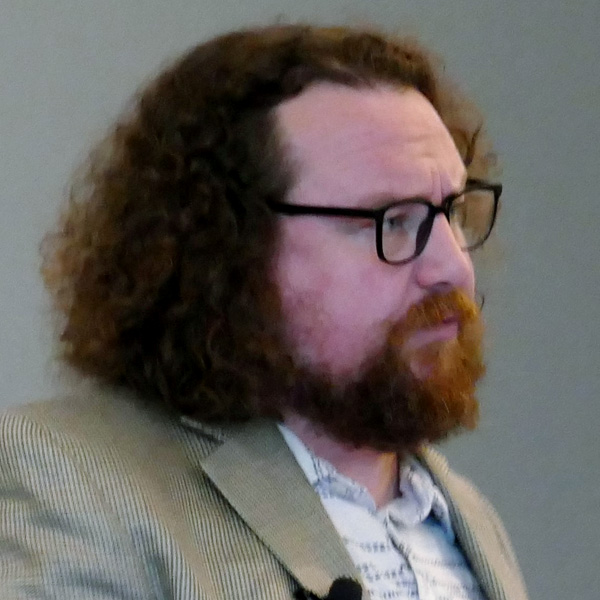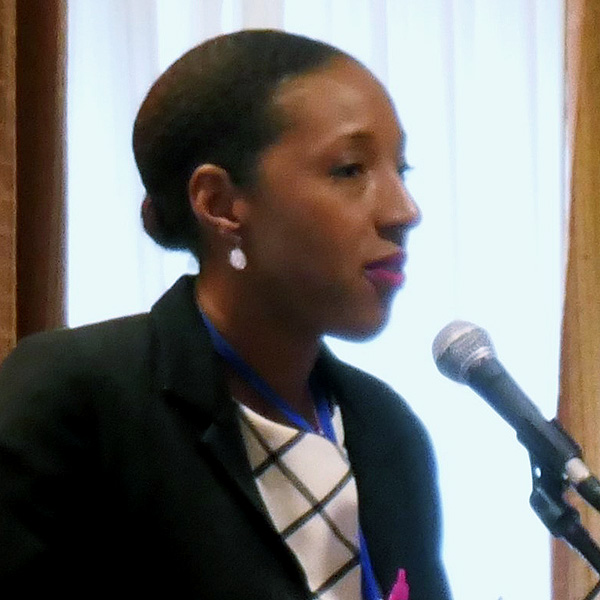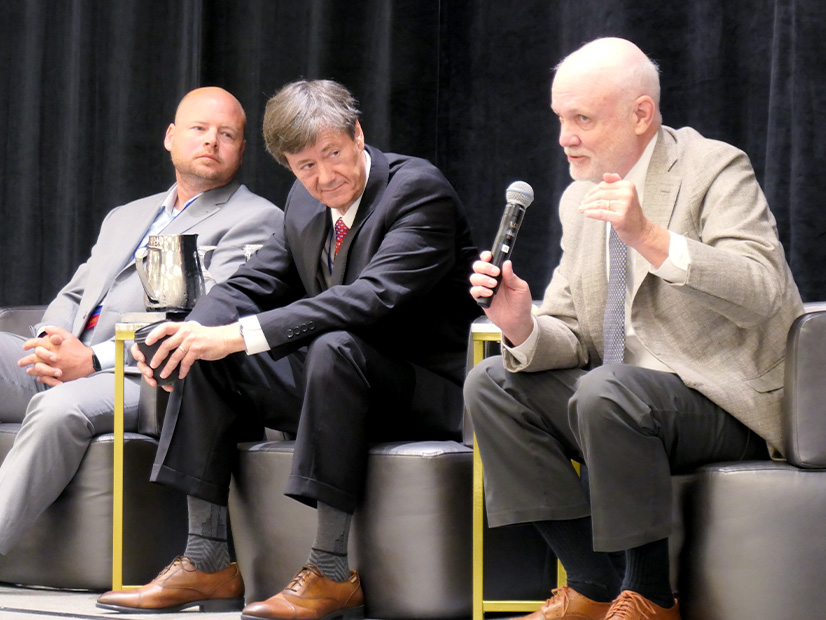The Department of Energy on Friday made a series of announcements signaling that the Biden administration is doubling down on its commitment to develop and commercialize carbon management technologies as a critical element of its climate agenda.
The selection of two projects as the nation’s first regional direct air capture (DAC) hubs — one each in Louisiana and Texas — grabbed the headlines, but the two notices of intent (NOIs) released on the same day also show DOE digging in for the long haul, both on research and development and “responsible” implementation of its programs. (See DOE to Fund Direct Air Capture Hubs in Texas, Louisiana.)
Published in the Federal Register, the first NOI unveils DOE’s plans for a Responsible Carbon Management Initiative that will “encourage project developers and others in [the] industry to pursue the highest levels of safety, environmental stewardship, accountability, community engagement and societal benefits in carbon management projects.”
The NOI contains the agency’s Principles for Responsible Carbon Management, which cover community engagement and tribal consultation, environmental justice, transparency, long-term environmental stewardship, and regulatory and health and safety standards.
Since the passage of the Infrastructure Investment and Jobs Act, more than 100 carbon removal projects have been announced in the U.S., according to Brad Crabtree, assistant secretary of DOE’s Office of Fossil Energy and Carbon Management (FECM).
“That’s why this Responsible Carbon Management Initiative is so important,” he said in Friday’s announcement. “It will provide a framework for encouraging and recognizing best practices in the development of carbon management projects and for fostering transparency and learning through greater data and information sharing among industry, governments, communities and other stakeholders.”
The second NOI sets out DOE’s road map for new and ongoing research grants and prizes to advance its Carbon Negative Shot (CNS), one of the agency’s Energy Earthshot initiatives, which set high aspirational goals for improving the efficiency and cutting the costs of emerging technologies.
CNS is targeting “gigaton-scale deployment” for carbon dioxide removal technologies within the next decade, at a price of less than $100/metric ton of carbon dioxide captured, including the cost of monitoring, reporting, verification (MRV) and “durable storage.”
A gigaton of CO2 would equal 1 billion tons, or about one-fifth of total U.S. CO2 emissions in 2022, according to DOE.
Current prices for carbon removal technologies vary widely, from “low hundreds a ton and low thousands a ton,” said Noah Deich, FECM deputy assistant secretary, in an interview with NetZero Insider.
The agency defines carbon dioxide removal (CDR) as any form of carbon capture from ambient air or water, as opposed to capturing emissions from a power plant or industrial facility. The funding opportunities ahead will include pilots in small biomass carbon removal and storage, enhanced mineralization projects and marine projects, including direct capture from the ocean.
Biomass carbon renewal refers to technologies that use plants or algae to remove CO2 from the atmosphere, which in some cases may include combustion and carbon capture. Enhanced mineralization uses “alkaline materials such as calcium- or magnesium-rich crushed rocks spread over the ground,” according to a DOE fact sheet,
Other planned funding includes prizes for commercial-scale DAC pilots, smaller than the hubs, and funding for projects “developing and commercializing protocols, technologies and methods to improve MRV” of different carbon removal technologies.
Building the Market
Both the United Nations International Panel on Climate Change and the International Energy Agency (IEA) have framed carbon removal and storage technologies as essential to limiting climate change to 1.5 degrees or 2 degrees Celsius by 2050 or later.
In a 2022 analysis, the IEA said CDR should be part of a comprehensive strategy for reaching global net-zero emissions, but “not an alternative to cutting emissions or an excuse for delaying action.” The agency sees a more modest role for DAC, projecting that it would account for about 85 metric tons (MT) of CO2 removal worldwide in 2030 and 980 MT in 2050.
President Joe Biden and Energy Secretary Jennifer Granholm also have promoted carbon management technologies as central to the U.S. commitment to cut the nation’s greenhouse gas emissions 50-52% by 2030.
But to date, carbon capture and storage technologies have been used in the U.S. primarily for enhanced oil recovery (EOR) — that is, injecting CO2 into low-producing oil wells, first pushing out more oil from crevasses where the CO2 then can be permanently stored.
Both the Infrastructure Investment and Jobs Act (IIJA) and the Inflation Reduction Act (IRA) provide major new funding to develop a range of carbon management technologies at commercial scale. The IIJA provides $3.5 billion for the development of four DAC hubs, which will include CO2 capture, processing and sequestration, at commercial scale.
As the first two hubs, Occidental Petroleum’s South Texas DAC hub and Battelle’s Project Cypress hub on the Louisiana Gulf Coast are slated to receive up to $1.2 billion of the IIJA funds. The projects also will be eligible to receive the IRA’s DAC tax credits of $180/ton for up to 10 years.
Occidental uses EOR extensively at its wells in Texas, according to the company website. However, during a Thursday press call, Kelly Cummins, deputy director of DOE’s Office of Clean Energy Demonstrations, said none of the carbon captured at the Texas or Louisiana hub will be used for EOR.
Rather, the CNS NOI positions the regional hubs as part of DOE’s efforts to build out a carbon management ecosystem. The NOI lists a dozen projects and prizes already announced and underway. Still, DOE notes, “The gap between the goals of CNS and the current commercial viability of some CDR technologies is substantial.”
The NOI “provides a strategy to coordinate funding opportunities that involve a variety of CDR pathways, technology readiness levels, and DOE offices and programs.”
To help build the market, DOE will use $35 million from the IIJA to underwrite carbon removal purchasing agreements, aimed in part at standardizing the credits produced by CDR. Microsoft and Climeworks recently signed a 10-year agreement for the DAC startup to capture and permanently sequester 10,000 tons of CO2 on behalf of the computer software giant.
Deich said the CDR purchase initiative is intended to “show how this tool can be scaled in the future and how it can drive innovation in the carbon removal space.”
The relatively small amount allocated to the program means it would have minimal impact on U.S. emissions, he said.
But standards are needed “in terms of what counts as carbon removal credits, how to actually go about measuring and verifying the carbon removal that … actually was delivered and stays delivered,” Deich said. “So, our aim in this program is to really help demonstrate what we think is best in class and hopefully crowd in a lot more private sector purchases in the near term.”
‘When Deployed Responsibly’
The Responsible Carbon Management Initiative is another effort to develop standards for DOE’s projects and the industry at large, and perhaps quell concerns and skepticism among some environmental groups, which continue to see carbon capture as a lifeline for the fossil fuel sector.
The Environmental Protection Agency’s proposed rule to use carbon capture and storage as a “best system for emission reduction” at fossil fuel power plants also received a mixed reception in comments from a range of industry stakeholders. (See EPA Power Plant Proposal Gets Mixed Reception in Comments.)
Echoing IEA, the NOI on the initiative states, “When deployed responsibly, [carbon management technologies] are complementary [to], and not a replacement for parallel efforts to reduce emissions.”
DOE sees the initiative as a two-phase program, first developing the Responsible Carbon Management Principles and getting companies to commit to them. In the second phase, “FECM would provide resources to support project developers seeking to meet the principles or other aspects of this effort … [and] focus on evaluation of principle implementation, accountability and leadership.”
The principles outlined in the NOI focus broadly on different aspects of community engagement, equity and transparency. For example, developers are called on to consider the cumulative impacts a carbon management project might have on the community where it is located. Developers also should evaluate and mitigate environmental impacts and “publish environmental impact analyses and project monitoring data in a way that is timely and easy for the public to access.”
If the initiative is successful, FECM could develop “a robust recognition program” to raise the public profile of industry leaders and promote responsible carbon management, the NOI says.
The NOI also includes a request for information asking industry stakeholders for feedback on both the initiative and principles. Questions include whether the principles “would be likely to meaningfully advance carbon management,” whether stakeholders would either commit to or endorse them and what changes should be made to improve chances of industry acceptance. The deadline for comments is Sept. 11.







